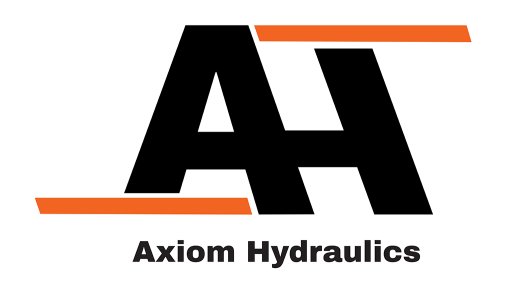Realities of modern energy planning
Energy technologies involve two realities that influence the way we do our planning: certainty and uncertainty.
There is certainty in tried and tested stuff, and this relates to our experience and knowledge of mature technologies. These technologies give us confidence in several regards: operational performance, servicing the technology, low financial risk and other interlinkages that usually come with the technology.
Uncertainty relates to new technologies, about which there are several issues: performance risk, high cost of finance, serviceability and undeveloped linkages. New technologies can be mature (but not of sufficient scale), semi- mature (commercial but scale costs are still high) and frontier, where proof of concept has been achieved but there has been insufficient performance experience, with more research and development required.
The danger of mature technologies is that, over time, they can be overtaken by the unexpected. Suddenly, a better, more efficient technology begins to gain traction and starts looking like a mature technology in terms of attaining low performance risk, better financing and interlinkages. The old is displaced by the new and a new wave of energy technologies threatens to unseat old models of energy supply and management.
There is a second level of certain and uncertainty. The first relates to confidence that there will be sufficient fuel at the right price and that there will be security of supply of that fuel. In terms of uncertainty, technologies that depend on abundant and secure fuel supply can suddenly experience scarcity. This relates to price, supply constraints, quality of the fuel, new demand for the fuel outside the dedicated sector and other factors. Mature fuel technologies may provide technology performance confidence but can be subject to fuel uncertainty – in terms of supply and price, especially if the fuel constitutes a significant portion of the operating costs.
Mature technologies that we are accustomed to generally fit a particular institutional model for the electricity sector. Bulk baseload power plants, for example, achieve economies of scale if they follow the logic of a utility model. This means everything has to happen at scale – from the size of the plants, the volume of the fuel and evacuation of the generated power over extensive geographic areas and networks of distribution to a large group of consumers. Maintaining such a system requires significant management and technical capability. But there is also room for losses. This may be the result of operational inefficiencies, logistical inefficiencies, theft and many other factors.
And, let us be frank, when there is no competition, sometimes the status quo or inertia can linger for a while. The inefficiencies and losses can grow in a climate of ‘hear nothing, do nothing’.
Planning for energy technologies cannot be simply an exercise that is limited to the certain. This also has to involve calculations, projections and an understanding of the uncertain. There has to be a flexible model that incorporates known and unknown future risks.
You can only plan for what you know well, but you can plan very well for both what you know and what you do not know. Such flexible planning can build future insights into the present. When there are high levels of uncertainty, reliance on mature technologies would be more persuasive.
However, if the levels of uncertainty are declining for technologies that have high levels of uncertainty, then it is worthwhile paying attention to these technologies rather than dismissing or ignoring the possible value these technologies may bring in terms of diversity, cost reduction and overall system cost management.
For planners, with respect to new technologies, the concern is not so much how they fit in with the existing business model, but how they may constrain or force a change in the prevailing business model. The issue of the expansion of renewables, for instance, is not just about renewables but, far more fundamentally, it is beating a path for other modular technologies that are not at the same level of maturity as we may have for photovoltaics and wind. But they are bringing an awareness to planners of what decentralised energy service models could look like in the future and how energy can be delivered in a different way to how it is being delivered today. They bring within the visibility of the planner the power of decentralised energy service models and how they can undermine the longevity of centralised models.
We do have two systems evolving: we understand the first very well, but have not fully grasped the second. However, the success of the latter will certainly disrupt the old model. It is still too early to tell – a lot will depend on many different technology solutions coming together.
Planning new power today poses many challenges for planners, with the challenges ranging from environmental issues to the potential for disruptive technologies gaining ascendency. But planning has to happen with imprecise knowledge and an uncertain future.
This makes planning both interesting and perilous for both private and public utilities. Centralised models have limited permutations, while decentralised models have a myriad of permutations and approaches in their evolution outside the realm of predictability – until a few models and approaches reach scale and dominance. Energy planning today is faced with a paradox. It needs to bring the future forward to exercise some control over events (this is seen in the logic of bulk power plants with central control) but no amount of planning can prepare us for the sudden and unexpected forces that can change the course of history.
Article Enquiry
Email Article
Save Article
Feedback
To advertise email advertising@creamermedia.co.za or click here
Comments
Press Office
Announcements
What's On
Subscribe to improve your user experience...
Option 1 (equivalent of R125 a month):
Receive a weekly copy of Creamer Media's Engineering News & Mining Weekly magazine
(print copy for those in South Africa and e-magazine for those outside of South Africa)
Receive daily email newsletters
Access to full search results
Access archive of magazine back copies
Access to Projects in Progress
Access to ONE Research Report of your choice in PDF format
Option 2 (equivalent of R375 a month):
All benefits from Option 1
PLUS
Access to Creamer Media's Research Channel Africa for ALL Research Reports, in PDF format, on various industrial and mining sectors
including Electricity; Water; Energy Transition; Hydrogen; Roads, Rail and Ports; Coal; Gold; Platinum; Battery Metals; etc.
Already a subscriber?
Forgotten your password?
Receive weekly copy of Creamer Media's Engineering News & Mining Weekly magazine (print copy for those in South Africa and e-magazine for those outside of South Africa)
➕
Recieve daily email newsletters
➕
Access to full search results
➕
Access archive of magazine back copies
➕
Access to Projects in Progress
➕
Access to ONE Research Report of your choice in PDF format
RESEARCH CHANNEL AFRICA
R4500 (equivalent of R375 a month)
SUBSCRIBEAll benefits from Option 1
➕
Access to Creamer Media's Research Channel Africa for ALL Research Reports on various industrial and mining sectors, in PDF format, including on:
Electricity
➕
Water
➕
Energy Transition
➕
Hydrogen
➕
Roads, Rail and Ports
➕
Coal
➕
Gold
➕
Platinum
➕
Battery Metals
➕
etc.
Receive all benefits from Option 1 or Option 2 delivered to numerous people at your company
➕
Multiple User names and Passwords for simultaneous log-ins
➕
Intranet integration access to all in your organisation

















